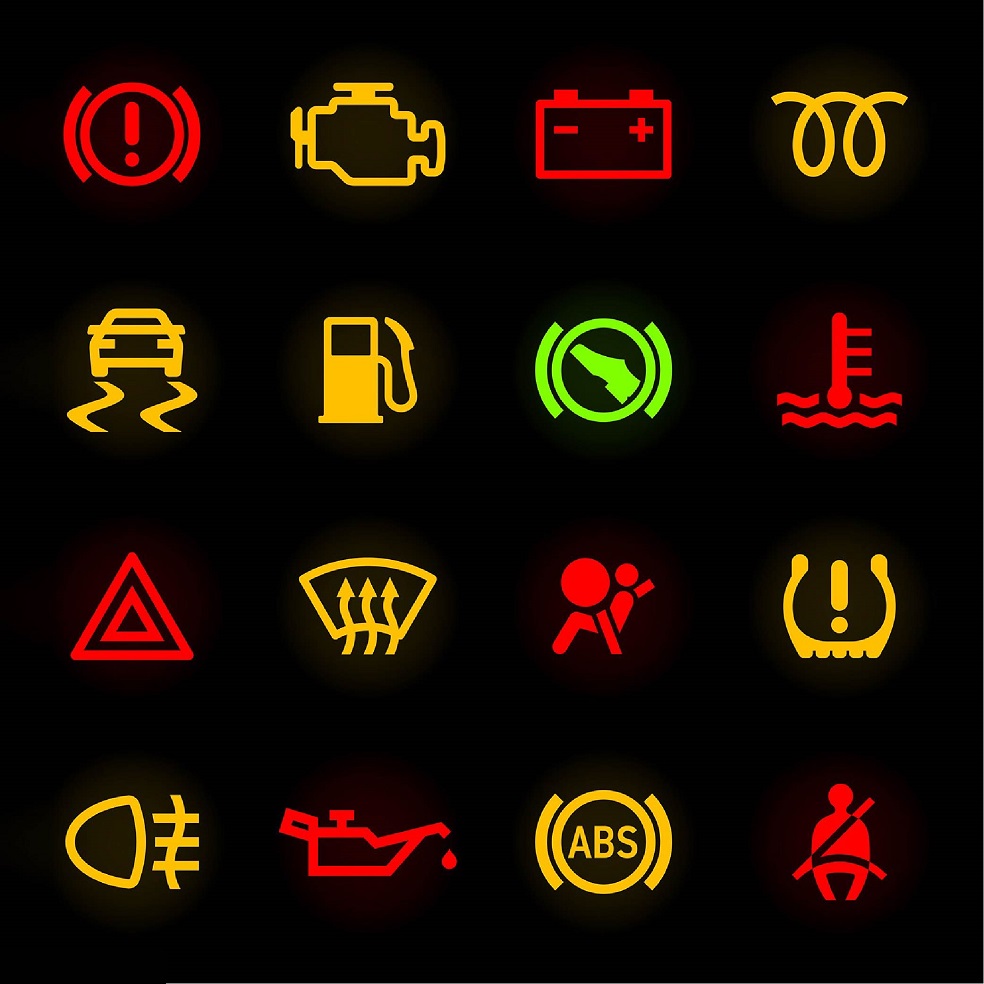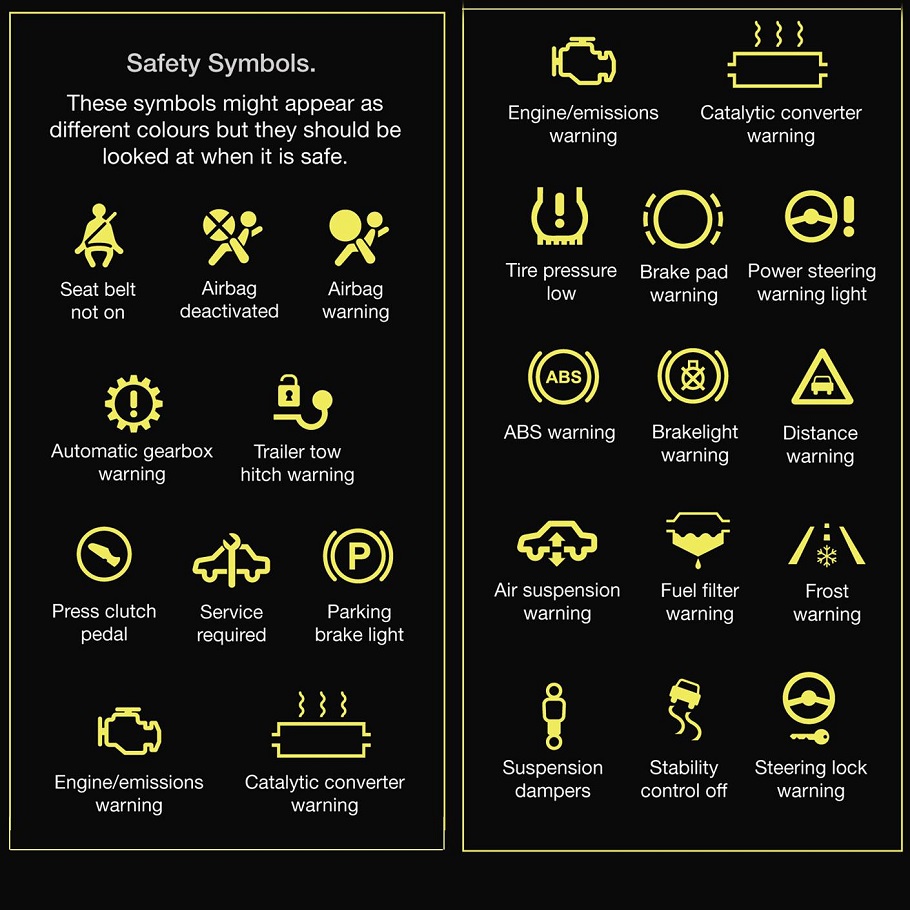Every driver has seen it. You start your car, and a yellow warning light flickers on your dashboard. It could mean something simple or indicate a serious issue. Understanding this light is vital for maintaining your vehicle’s health.
What Does the Yellow Warning Light Mean?
The yellow warning light is essential. It typically indicates a problem that needs attention. However, it is not an immediate emergency. Unlike the red warning lights that signal urgent problems, yellow lights invite you to take action soon but do not require immediate stop driving.
Common Causes of the Yellow Warning Light
Many factors can cause the yellow warning light. Engine issues are one common cause. Your engine is complicated and contains various sensors. Each sensor helps monitor different engine components. If one of these sensors detects an issue, it sends a signal to the dashboard. This signal causes the yellow warning light to illuminate.
Another common cause is the problem with the vehicle’s emissions system. Modern vehicles have sophisticated emissions controls. These systems help reduce harmful emissions and improve fuel efficiency. A fault here may trigger the yellow light. This situation indicates you should check your emissions system, as it impacts both performance and environmental standards.
The yellow light may also relate to the anti-lock braking system (ABS). ABS helps prevent wheel lock-up during hard braking. If the system has a malfunction, the yellow light will signal a need for inspection. It’s important because the ABS plays a crucial role during emergency stops.
How to Respond to the Yellow Warning Light
When the yellow warning light appears, do not panic. First, refer to your vehicle’s manual. It will provide specific information about the warning light. Each car’s dashboard symbols can vary, and your manual will help clarify the meaning.
Next, make a note of the warning. This includes how long the light stays on and any other dashboard indicators that illuminate. If the yellow light comes on alongside other alerts, its meaning may change or indicate a more serious issue.
After noting the warning, schedule an appointment with a mechanic. They can diagnose the problem effectively. This step is crucial. Delaying repairs may lead to more significant issues and higher repair costs down the road.
Monitoring the Situation
In the meantime, keep an eye on how your vehicle performs. Are there any strange noises? How is the engine’s response? Take note of any differences. Small changes can help a mechanic diagnose the issue more accurately.
If your car shows erratic behavior, reconsider driving it. Err on the side of caution. Not all warning lights demand immediate action. However, your safety and the integrity of your vehicle remain paramount.
Knowledge is Power
When you learn about your car and its warning lights, you empower yourself. Familiarize yourself with your vehicle maintenance schedule. Regular maintenance can minimize future problems. Understanding your car helps you become a more confident driver.
Regular checks also include monitoring fluid levels. Oil, coolant, and brake fluid should all be within manufacturer-recommended levels. This vigilance can prevent many issues that lead to that yellow warning light.
Common Types of Yellow Warning Lights
The yellow warning lights can vary depending on the vehicle make and model. However, several commonly recognized symbols appear across brands. Understanding these symbols can bring clarity.
Check Engine Light
The most notorious yellow light is the check engine light. It can indicate various issues. From a loose gas cap to a more severe engine malfunction, the reasons can be wide-ranging. If this light appears, treat it with caution.
Before heading to the mechanic, check your gas cap. Ensuring it’s securely fastened can sometimes clear the light. If the light remains, a professional diagnosis is necessary.
Traction Control Light
Another common yellow warning light is the traction control light. When this light is illuminated, it may indicate a problem with the traction control system. This system helps prevent wheel spin on slippery surfaces. If it comes on, there may be an issue with the system’s functionality.
Tire Pressure Monitoring System (TPMS)
The tire pressure monitoring system (TPMS) light can also be yellow. This light often indicates low tire pressure. Maintaining correct tire pressure is critical for safety and fuel efficiency. If this light appears, check your tire pressure immediately. Under-inflated tires can lead to poor handling and increased risk of a blowout.
Why Ignoring the Yellow Warning Light is a Bad Idea
Ignoring the yellow warning light is unwise. Doing so can lead to larger, more expensive problems. Some issues may cause additional wear and tear on other parts of your vehicle. For example, an engine problem could cause transmission issues if left unchecked.
In addition, paying no heed to these warnings can also compromise your safety. Issues like brake system malfunctions may escalate without warning. This can create dangerous driving conditions.
The Long-term Consequences
Failing to address the yellow warning light can lead to higher repair costs. Many drivers make the mistake of hoping the problem will resolve itself. Unfortunately, this rarely happens. Quick, inexpensive fixes can turn into costly repairs if problems are ignored.
Additionally, you might face licensing or inspection issues. Some regions have strict emissions laws. Driving with an illuminated check engine light can lead to failed inspections. This could result in fines or even being unable to register your vehicle.
Respecting Your Vehicle’s Health
Taking your car’s warnings seriously reflects respect for the vehicle and its maintenance needs. A well-maintained vehicle lasts longer and performs better. Investing time in understanding what your car needs can save money and ensure a safer driving experience.
Developing a regular maintenance routine can significantly extend your vehicle’s lifespan. Be proactive with oil changes, tire rotations, and other routine checks. These practices often prevent issues before they trigger those yellow warning lights.
Maintaining Your Vehicle to Prevent Warning Lights
It is essential to maintain your vehicle regularly. By doing so, you reduce the chances of yellow warning lights illuminating. Consider a few preventive tips for maintaining your car’s health.
Regular Oil Changes
One of the most crucial aspects is oil changes. Oil lubricates the engine. Old or dirty oil can lead to engine wear and even failure. Most manufacturers recommend oil changes every 3,000 to 5,000 miles, but check your owner’s manual for specifics.
Using the right oil type is just as important. Always refer to your manual for the appropriate oil grade. Using the wrong oil can affect performance and lead to issues that may illuminate the warning lights.
Tire Maintenance
Routine tire checks are also vital. Ensure proper inflation and tire condition. Inspect for signs of wear and damage, such as cracks or bulges. It’s advisable to rotate your tires every 6,000 to 8,000 miles. This practice promotes even wear and can extend their lifespan.
Additionally, consider regular alignment checks. Misalignment can lead to uneven wear and reduce your vehicle’s handling ability. Keeping your tires in excellent condition can prevent warning lights from turning on due to related issues.
Brake inspections
Brake system checks are equally critical. Your brakes are essential for safety. Inspect brake pads and rotors every 10,000 to 20,000 miles. If you notice grinding sounds or a spongy brake pedal, address these issues immediately. Any brake-related warning lights should never be ignored.
Regular maintenance can minimize the occurrence of yellow warning lights. By developing a routine and practicing good habits, you can help ensure a smoother driving experience.
Conclusion
The yellow warning light should never be ignored. It serves as an essential communication tool between your vehicle and you. It indicates that something needs attention, but it doesn’t always signal an immediate crisis.
Understanding the warning light, its possible meanings, and how to respond is vital for any driver. Check your owner’s manual, monitor your vehicle’s performance, and don’t hesitate to consult a professional mechanic if something seems off.
By investing in regular maintenance and caring for your vehicle, you can prevent many issues that trigger the yellow warning light. Being proactive helps you save money, ensure safety, and keep your vehicle in excellent condition. Embrace your responsibility as a driver and develop a deeper understanding of your vehicle’s needs.



